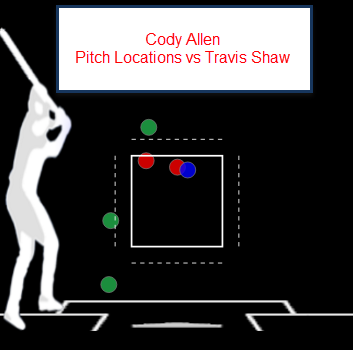A certain Cleveland media member declared the season over on September 17. But after knocking off the Boston Red Sox 4-3 on Monday night, the Tribe is now guaranteed to be playing baseball through October 18.
I assume everyone watched the game, or has at least caught up on the highlights by now, so rather than a traditional recap, I’m going to hit on some of biggest takeaways I had on the game:
Tomlin is locked in again
I don’t know what went wrong for Josh Tomlin in August. I haven’t seen anyone from the Indians talk about it publicly in much detail. He was so terrible you would think an injury had to be the cause, but maybe it was just fatigue.
Tomlin reached a career high innings pitched and tossed 70 more innings this season than in any of the previous four. But in early September he effectively took two weeks off, throwing just one inning in relief between starts which were 14 days apart. After returning he posted a 1.75 ERA with zero walks in four starts.
He continued to be locked in against the Sox, keeping the ball down and forcing hitters to adjust their zone by getting ahead in counts.
The Blue Jays will be another tough test against Tomlin, but I feel significantly more confident in him after seeing him carry his late-season success into the postseason.
Bullpen usage is exciting, but is it sustainable?
We all loved Andrew Miller and Cody Allen locking down the Red Sox in Game 1, combining to throw 80 pitches. It was innovative, exciting to watch and clearly played a role in the outcome.
But can this continue?
There’s a reason why these pitchers are relievers. Miller failed miserably as a starter because his stuff just isn’t good enough when he can’t go all out. But when he puts all of his energy into 20 pitches, he’s nearly unhittable. Same goes for Allen.
So where is the breaking point? How far you can you stretch this type of pitcher before they lose that edge. And how many times can they be pushed that far before there’s a cumulative effect?
Both Miller and Allen were a little sloppy tonight. Maybe that’s a coincidence, but maybe their extended usage in Game 1 was a factor.
Since they’ve never been asked to do this before, we just don’t know the answer.
But I guarantee its something Terry Francona and Mickey Callaway are discussing with their pitchers this week.
Callaway deserves a ton of credit
The Indians are so good at executing the game plan against each and every hitter. I’m sure some of this has to do with the mentality of the pitchers on this staff, but I have no doubt Callaway is a driving force behind the scenes.
The final at-bat really stood out to me. Allen was wearing down and in a jam with Travis Shaw coming up to bat, a hitter he’s faced just three times. Shaw certainly isn’t the type of hitter you need to spend a lot of time preparing for, but even against this role player, Allen (and Roberto Perez) knew exactly how to attack him.
Take a look at Shaw’s batting chart compared to how Allen attack him:
Allen purposefully and effectively attacked Shaw up in the zone, not giving him anything he could square up and drive. Based on the location of those six pitchers, there was almost no chance Shaw was going to hurt Allen in that at-bat.
It’s one thing to have the scouting report for David Ortiz memorized, but the Indians pitching staff is consistently prepared for every hitter that comes to the plate. And it’s for this reason that they’re able to get the most out of guys like Tomlin who don’t have overpowering stuff.
There are obviously good reasons for outsiders to pick against the Tribe in the ALCS—I won’t blame anyone for picking the Jays—but this team is so prepared and so good at executing the game plan that no one should be surprised when they keep winning.




